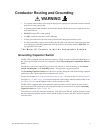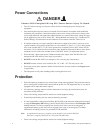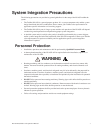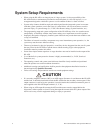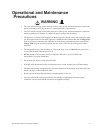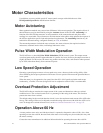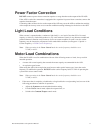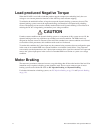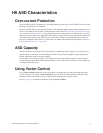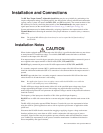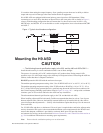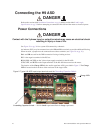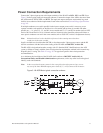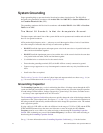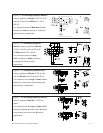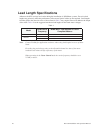H9 ASD Installation and Operation Manual 13
H9 ASD Characteristics
Over-current Protection
Each H9 ASD model was designed for a specified operating power range. The H9 ASD will incur a trip if
the design specifications are exceeded.
However, the H9 ASD may be operated at 100% of the specified output-current range continuously or at
120% for a limited amount of time as indicated in the section titled
Current/Voltage Specifications on pg.
263. Also, the Stall Prevention Level may be adjusted to help with nuisance over-current trips (see F601).
When using the H9 ASD for an application that controls a motor which is rated significantly less than the
maximum current rating of the ASD, the over-current limit (Thermal Overload Protection) setting will
have to be changed to match the FLA of the motor. For further information on this parameter, see
Motor
Overload Protection Level 1 on pg. 182.
ASD Capacity
The H9 ASD must not be used with a motor that has a significantly larger capacity, even if the motor is
operated under a small load. An ASD being used in this way will be susceptible to a high-output peak
current which may result in nuisance tripping.
Do not apply a level of input voltage to an ASD that is beyond that which the ASD is rated. The input
voltage may be stepped down when required with the use of a step-down transformer or some other type
of voltage-reduction system.
Using Vector Control
Using Vector Control enables the system to produce very high torque over the entire operating range
even at extremely low speeds. Vector Control may be used with or without feedback. However, using
feedback increases the speed accuracy for applications requiring precise speed control.
See F015 on pg. 81 for further information on using Vector Control.



